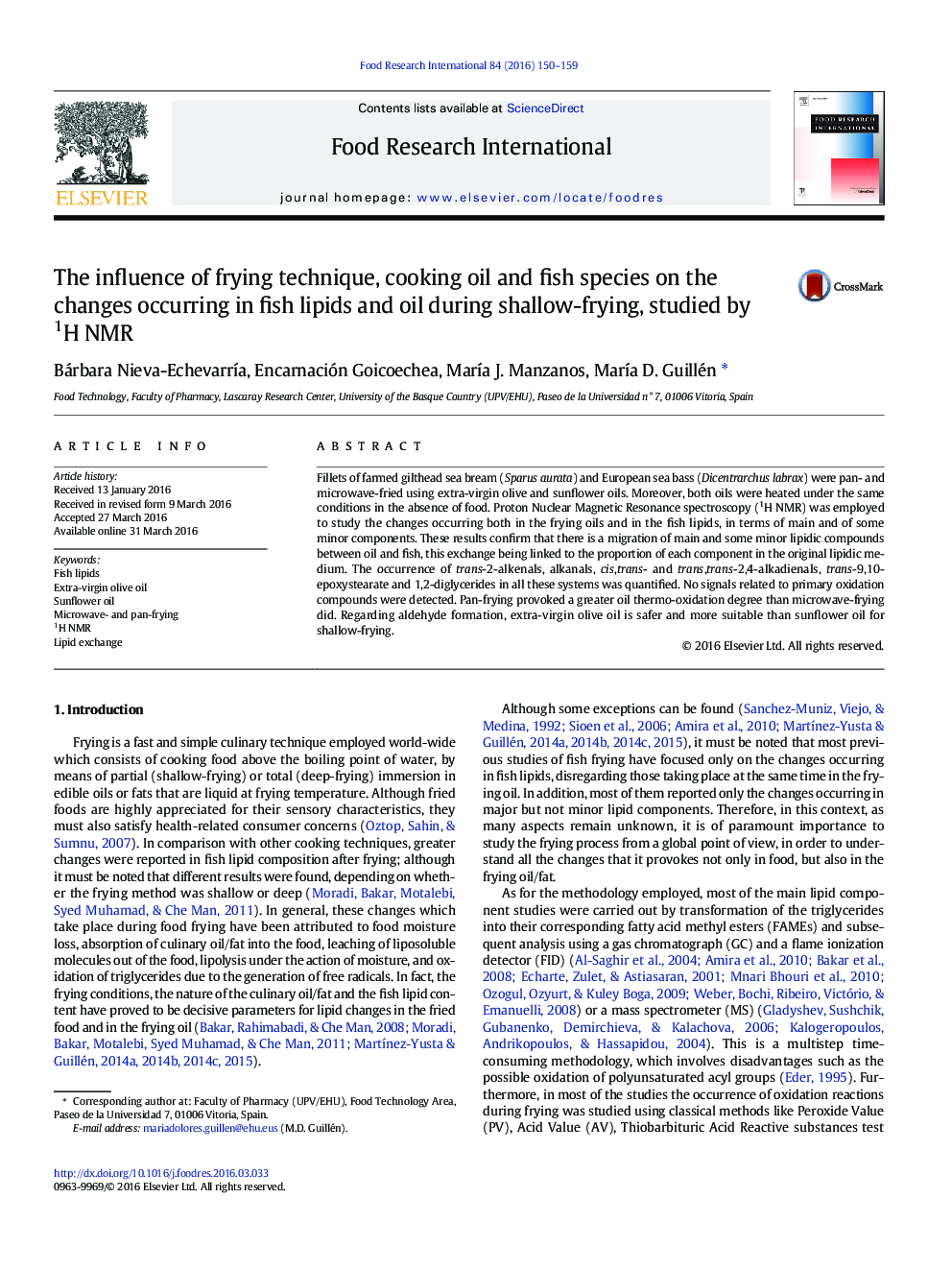| Article ID | Journal | Published Year | Pages | File Type |
|---|---|---|---|---|
| 4561160 | Food Research International | 2016 | 10 Pages |
•The study of fish shallow-frying is undertaken for the first time by 1H NMR.•Migration of main and minor lipidic compounds between oils and fish occurs.•Thermo-oxidation and hydrolysis reactions in oils and fish lipids are studied.•Pan-frying provokes higher thermo-oxidation than microwave-frying.•As for aldehyde formation, extra-virgin olive oil is safer than sunflower oil.
Fillets of farmed gilthead sea bream (Sparus aurata) and European sea bass (Dicentrarchus labrax) were pan- and microwave-fried using extra-virgin olive and sunflower oils. Moreover, both oils were heated under the same conditions in the absence of food. Proton Nuclear Magnetic Resonance spectroscopy (1H NMR) was employed to study the changes occurring both in the frying oils and in the fish lipids, in terms of main and of some minor components. These results confirm that there is a migration of main and some minor lipidic compounds between oil and fish, this exchange being linked to the proportion of each component in the original lipidic medium. The occurrence of trans-2-alkenals, alkanals, cis,trans- and trans,trans-2,4-alkadienals, trans-9,10-epoxystearate and 1,2-diglycerides in all these systems was quantified. No signals related to primary oxidation compounds were detected. Pan-frying provoked a greater oil thermo-oxidation degree than microwave-frying did. Regarding aldehyde formation, extra-virgin olive oil is safer and more suitable than sunflower oil for shallow-frying.
Graphical abstractFigure optionsDownload full-size imageDownload as PowerPoint slide
